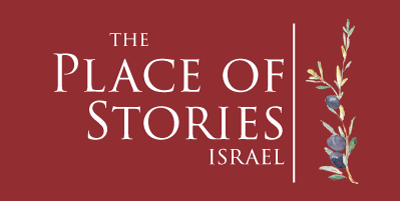Jerusalem Journal # 179
What is your “bamah” and are you using it for good, for honor, or for dishonor? Before you sports fans of the University of Alabama burst out in a cheer of “Roll Tide,” let me explain the word “bam-ah” as understood in ancient times here in the Land of the Bible and how that same term has links to the theater today…and yes, Hollywood!
Hilltops all across ancient Israel were sites for worship, whether to the God of Israel or some other deity of the day. High places were physically considered closer to the heavens. “Bamah” referred to a high place, authority, an elevated rise that could be an artificial platform or mound giving the effect of natural height. It was on those “high places,” or “ba-mot(plural),” where certain objects marked them as sacred space, that worship was performed until King David sought to centralize worship of Israel’s God in Shiloh, then later at Mt. Moriah (today’s Temple Mount) in Jerusalem.
Evidence of these “bamot,” from ancient times of Caananite worship, is scattered throughout the land in places like Megiddo in the Jezreel Valley, Tel Dan (Jereboam’s cultic high place near Mt. Hermon), and Bethel in the Judean Hills.

The Canaanite “bamah” at Megiddo (19th cent. BC) was located at a strategic crossroads for all to see and be influenced
Now laid bare by the archaeologists’ pick and shovel, these sites are a reminder that an elevated place was one with an amazing view over the landscape below and where those people who ascended to the “bamah” were highly visible to all, communicating messages to others, whether true or false. According to the Bible, “bamot” most often became places of spiritual uncleanness and idolatry, far from the covenantal relationship the God of Israel established with His people.
Today, modern Hebrew language notes that a “bimah” (or “bema”) is the central platform in synagogues throughout the world from which the congregation is addressed and the Torah is read. It also uses “bamah” when referring to a theatrical stage. A director, in Hebrew, for both film and theater is called a “bee-maiy,” from the same root word, meaning one who has authority over the production.
A few weeks ago, Gary and I were invited to the Jerusalem film set of actress Natalie Portman’s directorial debut, “A Tale of Love and Darkness,” the biographical story of one of Israel’s beloved novelists, Amos Oz. The set location was not far from Jerusalem’s Old City walls in the former British Central Prison. It was there we met our good friend, Yoram Honig, who serves as Director of Jerusalem’s Film and Television Fund which is one of the financial backers of the Hebrew-language feature film.

Yoram and Gary stand in front of the prison gates
Passing through the prison gates we were surrounded by children and adults in 1940’s period woolen coats, hats, and hairstyles–many carrying shabby leather suitcases. The day’s filming focused on young “Amos” climbing aboard a bus, as he leaves behind his home and the trauma of his mother’s suicide, embarking on a journey to a new life in a distant kibbutz. Two dusty antiquated buses filled the narrow alley in the compound, now turned into a period location.

A view from outside the set as actors await their scene
Yoram motioned us to follow him through a maze of the latest in production equipment. Leaving the warmth of Jerusalem sunlight, we ducked under a black curtain and entered a room cast in darkness. Feeling our way to the back, two TV-sized monitors and smaller sound boards were the only light illuminating the Turkish stone toolshed, apart from an occasional lifting of the curtain. I groped my way to a rickety plastic chair, soon realizing I shared a corner with a threadbare garden hose, dented shovel, a tangled rake, and various clippers.
Conversation in Hebrew flashed back and forth through the darkness as two shadowy figures, facing the monitors in front of us, had a focused discussion about what the cameras captured of the young actor taking his seat on the dilapidated bus and giving one final glance back at the world he was leaving.

Portman plays the role of Oz’s troubled mother, as well as directs (Photo credit: Yonatan Sindel/Flash 90 published in The Times of Israel, Feb. 11, 2014 )
Up went a corner of the black curtain and an assistant leaned in saying, “Natalie…(unintelligible Hebrew phrase).” Now this flashed in my head, “I’m in the director’s inner sanctum, ‘the holy of holies’, with Natalie Portman and her Polish Director of Photography as they communicate stage and camera directions to the set.” As the “bee-maiy,” Natalie has authority over all the detailed shots and directions in each scene and will ultimately shape the movie. It is her stage, her “bamah,” to honor or dishonor. She, as “bee-maiy,” has the “big-picture” view which will either make or break the film.
What is your “bamah?” Is it a sacred space? Is your message honoring or dishonoring? Shakespeare said, “All the world’s a stage.” Who is getting the glory for your performance?
Subscribe to our Jerusalem Journal email here!






